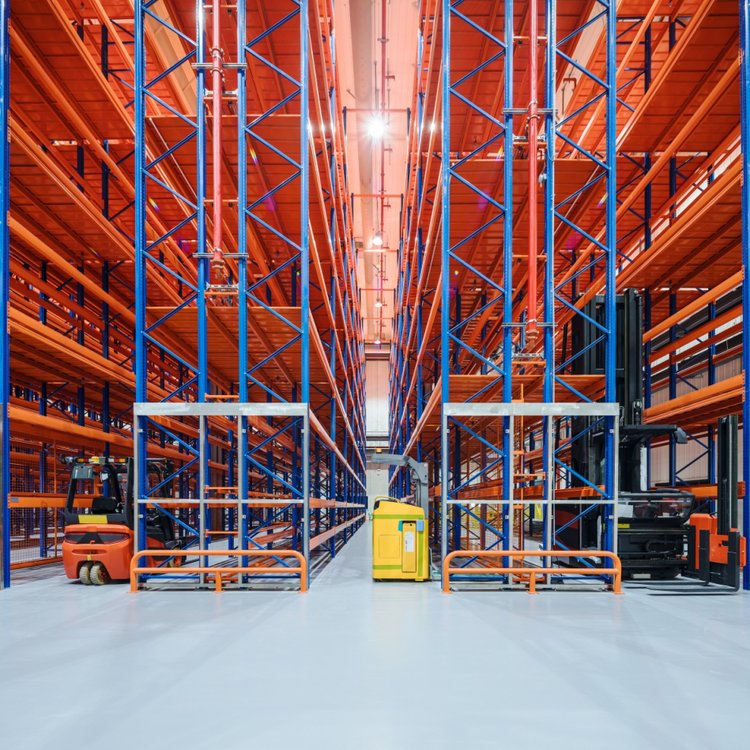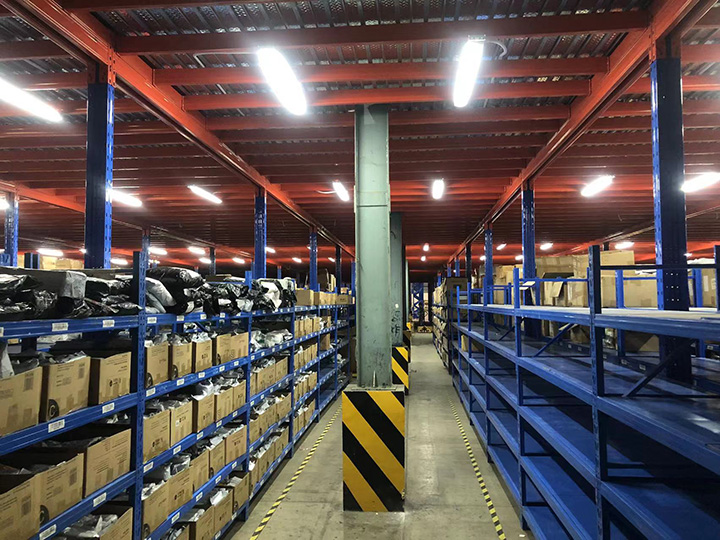In the world of modern logistics and supply chain management, the backbone of any efficient operation is often hidden in plain sight: the warehouse storage rack. Among these, the high rack storage warehouse stands as a testament to vertical ambition, maximizing cube space to unprecedented levels. This deep dive explores the critical components—from fundamental warehouse racking types to the intricacies of design and the pivotal role of industrial racking manufacturers. We'll also navigate the common pitfalls that can undermine even the most sophisticated systems.

At its core, warehouse racking is the engineered framework that supports organized storage. It’s the skeletal structure upon which inventory management is built. Without it, warehouses would devolve into chaotic piles of goods, vulnerable to damage and incredibly inefficient to navigate. The evolution from simple shelving to complex, automated structures has been driven by the relentless pursuit of space optimization and faster order fulfillment.
The basic principle is simple: go up, not out. By leveraging vertical space, businesses drastically reduce their facility’s footprint, leading to significant savings on real estate and building costs. This vertical strategy is the defining characteristic of a high rack storage warehouse, where systems can easily reach heights of 30, 40, or even over 100 feet, integrating seamlessly with material handling equipment like narrow-aisle forklifts and stacker cranes.
Not all storage needs are created equal. The choice of warehouse storage racks is a strategic decision that depends on product variety, weight, turnover rate, and retrieval needs. Selecting the wrong type can lead to inefficiency, damage, and safety hazards.
Selective Pallet Racking: This is the most common and versatile type of system. It provides direct, immediate access to every single pallet load, making it ideal for warehouses with a high variety of SKUs. While it offers excellent accessibility, it is less space-efficient than some denser alternatives.
Drive-In/Drive-Through Racking: Designed for high-density storage of homogeneous products with low SKU counts. Forklifts can drive directly into the rack structure to place or retrieve pallets. This system sacrifices some accessibility for massive gains in storage density, perfect for cold storage or storing seasonal goods.
Push-Back Racking: A dynamic system where pallets are stored on nested carts on slightly inclined rails. When a new pallet is loaded, it pushes the existing pallets back. Retrieval works in reverse—once a pallet is removed, the next one moves forward. It offers high density with better selectivity than drive-in systems, ideal for Last-In-First-Out (LIFO) inventory.
Pallet Flow Racking: A high-density, high-throughput system that uses gravity. Loaded pallets are placed on an inclined track on the high end and flow forward on rollers or wheels to the picking face on the low end. It’s a classic First-In-First-Out (FIFO) system, excellent for perishable goods or items with strict expiration dates.
Cantilever Racking: Essential for storing long, bulky, or irregularly shaped items like lumber, piping, or furniture. It features arms that extend from a central column, providing unobstructed access to the stored material without the interference of vertical front posts.
Designing a high rack storage warehouse is a complex multidisciplinary effort far beyond simply installing tall shelves. It is a precise science that balances structural integrity, operational workflow, and safety. A successful design integrates several key elements:
Comprehensive Load Analysis: The entire design hinges on understanding the load dimensions, weights, and distribution. This includes not just the static weight of the inventory but also the dynamic forces imposed by forklifts during loading and retrieval.
Integration with Material Handling Equipment (MHE): The racking system and the MHE are inseparable partners. The design must account for the clearances required for forklifts, stacker cranes, or automated guided vehicles (AGVs). This defines aisle widths, turning radii, and overall lift heights.
Building Constraints and Codes: The warehouse structure itself imposes limits. Ceiling height, column spacing, floor flatness, and sprinkler system requirements must all be meticulously considered. The design must also comply with all local building codes and seismic regulations, which are particularly stringent for tall structures.
Software and Digital Twin Modeling: Modern design relies heavily on sophisticated warehouse management system (WMS) integration and 3D modeling software. Designers can create a "digital twin" of the warehouse to simulate workflows, identify potential bottlenecks, and optimize slotting before a single rack is purchased.
Future-Proofing and Scalability: A great design accommodates growth and change. Systems should be designed with modularity in mind, allowing for reconfiguration or expansion as business needs evolve.

The quality and safety of your storage system are directly tied to the credibility of the industrial racking manufacturers you choose. This is not an area for cutting corners with substandard suppliers. Partnering with a reputable manufacturer ensures compliance with international standards (like RMI - Rack Manufacturers Institute standards in the US), superior materials, and professional engineering support.
Key considerations when selecting a manufacturer include:
Reputation and Experience: Look for a proven track record with projects similar in scale and complexity to yours.
Engineering and Support: They should offer full-service design and engineering support, not just product catalogs.
Quality and Certification: Ensure their products are manufactured to the highest standards and come with proper certifications.
Comprehensive Offering: The best manufacturers often provide a full ecosystem of products, including racking, shelving, mezzanines, and safety accessories like guards and netting.
Installation Services: Many top-tier manufacturers have certified installation teams or partner networks to ensure the system is erected correctly and safely.
Even the best-designed systems can be compromised by operational errors, poor maintenance, or unforeseen events. Being aware of these common problems is the first step toward prevention.
Improper Loading: Exceeding the designated load capacity of a beam or frame is one of the most dangerous and common failures. This includes unevenly distributed weight or double-stacking pallets in a single bay not designed for it.
Forklift Impact Damage: Daily operations inevitably lead to collisions. Even minor impacts can compromise the structural integrity of upright frames, bending columns or dislodging anchor bolts. These damages must be assessed and repaired immediately by a qualified engineer.
Neglected Inspections: Without a formal, regular inspection program, minor issues go unnoticed and can escalate into major hazards. OSHA recommends regular inspections by a designated competent person.
Missing or Damaged Safety Components: Locking pins, beam safety locks, and column guards are critical for preventing dislodgement. If these are missing, bent, or broken, the system is at a much higher risk of collapse.
Poor Design or Installation: In rare cases, the root cause is an original design flaw or improper installation. This underscores the importance of working with qualified professionals from the initial design phase through to the final installation sign-off.
Inadequate Worker Training: Operators must be thoroughly trained not only on how to use the equipment but also on the principles of the pallet racking systems they are loading. They should understand load limits, how to identify damage, and the critical importance of careful operation.
A high rack storage warehouse is a significant investment, but when planned and executed correctly—with the right warehouse storage racks, a sound design from reputable industrial racking manufacturers, and diligent operational practices—it becomes a powerful engine for profitability, efficiency, and competitive advantage.
 Wechat
Wechat
 Whatsapp
Whatsapp